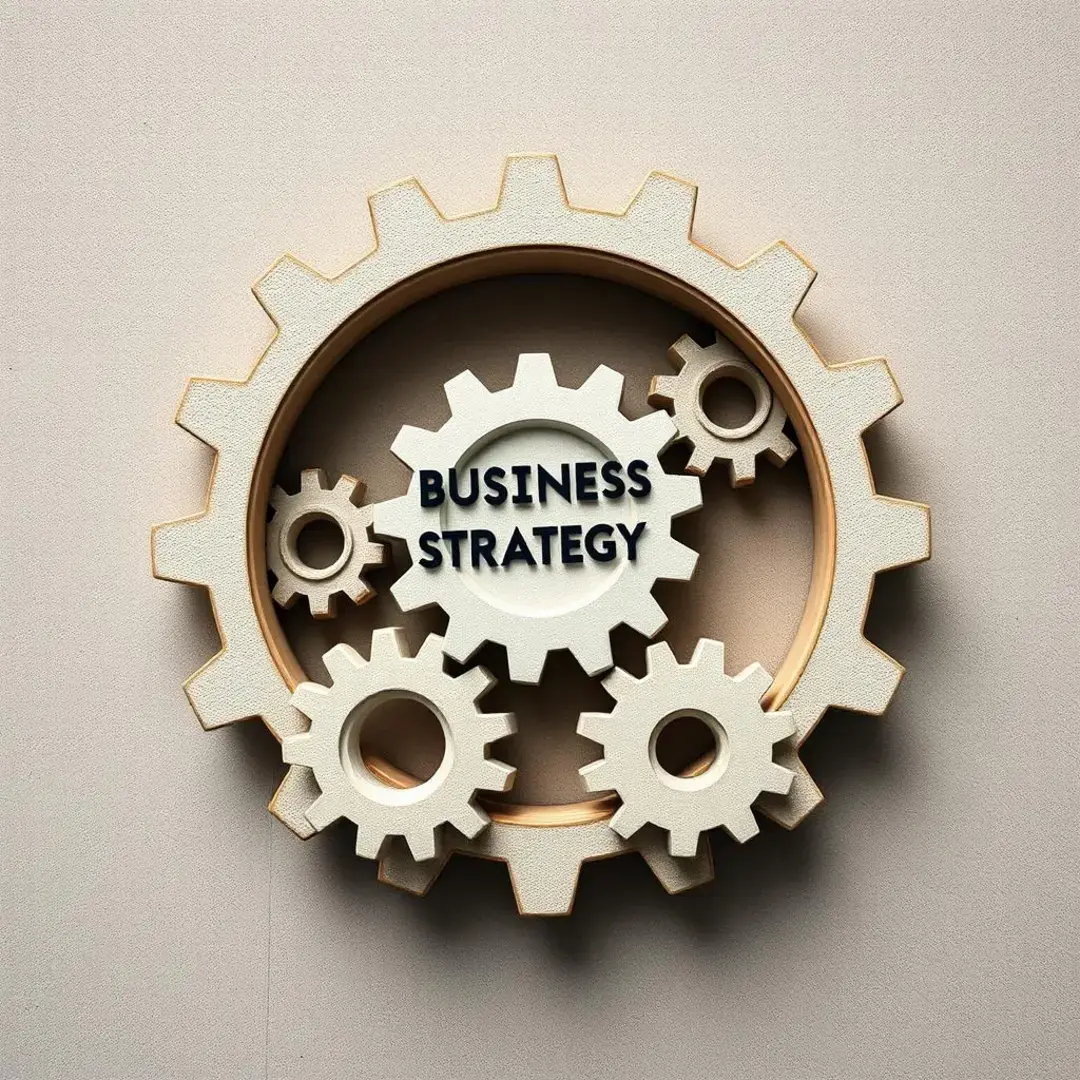Alignment: Harmony in Business Strategy
Defining Strategic Alignment

The Essence of Alignment
Strategic alignment is the process of ensuring that an organization’s actions, objectives, and resources are in sync with its overall vision, mission, and values. This connection lays the groundwork for coherent decision-making and fosters consistency across all levels of the organization. By crafting a shared narrative around these core elements, businesses can create a roadmap that guides every employee’s efforts toward common goals.
It is essential to cultivate an environment where everyone understands and embodies these principles. Doing so not only motivates employees but also enhances their ability to contribute meaningfully to the broader objectives of the organization. When alignment exists, it translates to improved performance, employee satisfaction, and retention rates, making it a key focus for any growing business.
At the heart of strategic alignment is a shared understanding among all stakeholders. This mutual comprehension enables the team to navigate challenges more effectively, forging stronger collaborations among departments. Each member needs to recognize their unique role within the larger organizational framework to develop a sense of belonging and responsibility in achieving collective objectives.
Furthermore, this shared understanding aids in minimizing miscommunications, often a root cause of inefficiencies. By embedding alignment into the corporate culture, businesses can empower teams to take initiative and make decisions that reflect the organization’s core values and strategic goals.
Why Alignment Matters for Advanced Strategies
In today’s fast-paced business environment, agility is crucial for survival. Strategic alignment facilitates a quicker response to market changes by ensuring that all employees are moving in the same direction. This unity not only allows organizations to adapt more readily but also to seize emerging opportunities more effectively, positioning themselves ahead of competitors.
To maintain this agility, organizations must instill a culture of continuous improvement and learning. Regular assessments of strategic initiatives ensure that the organization remains nimble and can pivot as required while still adhering to its core mission and values.
Strategic alignment directly correlates with a company’s ability to outperform its competitors. When all parts of an organization are aligned, they function as a cohesive unit, which enhances efficiency and innovation. Employees who understand the overall objectives are more likely to contribute ideas that can drive the business forward, creating a competitive edge that is hard to replicate.
This alignment also positions an organization to react proactively to external threats. By focusing on strategic initiatives that align with the overall vision, businesses can allocate resources smarter and more effectively, sustaining long-term success even in a volatile market.
An aligned organization maximizes the strengths of its teams, creating synergy that leads to superior outcomes. This collaborative atmosphere encourages knowledge sharing and resource pooling, ultimately leading to innovative solutions that meet customer needs. Teams that operate in silos often miss out on the collective intelligence that can propel a company forward.
Moreover, fostering synergy enhances problem-solving capabilities. When teams collaborate with a shared strategic intent, they can approach challenges from multiple perspectives, generating unique insights that facilitate better decision-making and execution.
Achieving Strategic Alignment: Advanced Techniques

Assessing Current Alignment
Before organizations can achieve strategic alignment, it is critical to assess their current standing. Identifying gaps and disconnects among strategies can reveal potential hurdles and areas of improvement. Through interactive discussions, surveys, and performance metrics, teams can pinpoint where misalignments occur and understand their impact on overall objectives.
This assessment creates a baseline from which organizations can develop targeted interventions. By recognizing discrepancies early, businesses can proactively realign strategies to ensure coherence in their efforts across all levels.
Effective communication is foundational for strategic alignment. Organizations must analyze the present communication channels to identify areas that may hinder collaboration and understanding. A robust communication framework enables the timely sharing of information, promotes transparency, and fosters engagement across all departments and levels.
Furthermore, upgrading existing channels or introducing new platforms can provide teams with better tools to collaborate and innovate. In an age where remote work is increasingly common, these considerations are essential for maintaining alignment.
Building a Culture of Alignment
Leadership plays a pivotal role in establishing a culture of alignment. Leaders must model behaviors that reflect the organization’s core values and strategic goals, showcasing their commitment to the alignment initiative. By being visible advocates for alignment, they inspire employees at all levels to adopt similar mindsets and approaches in their work.
The tone set by leadership shapes the organizational culture. When leaders effectively communicate the importance of alignment and translate that into actionable behaviors, employees are more likely to embrace these ideals, fostering an inclusive and collaborative work environment.
Cross-functional collaboration is key to achieving strategic alignment. By encouraging teams from different departments to work together, organizations can cultivate a holistic understanding of objectives among their employees. Collaboration breaks down silos, allowing teams to share insights, resources, and best practices that benefit the entire organization.
Structured initiatives such as joint projects, workshops, or team-building exercises can further enhance cross-departmental relationships. The resulting synergy not only fosters alignment but also drives innovation, as diverse perspectives contribute to richer solutions.
Finally, an effective feedback mechanism is essential for maintaining alignment. Organizations should regularly collect feedback on strategic initiatives and team performances to identify areas of strength and improvement. Open lines of communication ensure that employees feel empowered to share concerns, ideas, and suggestions that can help steer the organization toward its strategic goals.
Feedback loops provide invaluable insights into how well strategies are resonating at various levels. By integrating these insights into strategic planning, organizations can make informed decisions that promote sustained alignment across the board.
Advanced Alignment Frameworks
One effective framework for promoting strategic alignment is the Balanced Scorecard approach. This methodology enables organizations to translate their vision and strategy into a set of performance measures that help track progress. The Balanced Scorecard captures financial and non-financial indicators, ensuring a comprehensive view of organizational performance.
By aligning individual and departmental goals with overarching business goals through this framework, companies can drive performance improvements and engage employees in the alignment process. It ultimately leads to a clearer understanding of expectations and success metrics at every level.
Objectives and Key Results (OKRs) is another powerful method for aligning strategy across an organization. This iterative goal-setting framework not only clarifies objectives but also tracks progress toward achieving them. By establishing measurable key results that align with overall strategic objectives, employees can see how their contributions impact the organization’s success.
Implementing OKRs encourages transparency and accountability, as teams regularly assess their performance and adjust as necessary. This fosters a culture of alignment where achieving strategic goals becomes a collective responsibility shared by all employees.
Maintaining Strategic Alignment in a Dynamic Environment

Adapting to Change
In an ever-changing business landscape, maintaining strategic alignment requires organizations to be adaptable. Companies must regularly review their strategies to ensure they align with current market conditions and consumer needs. A proactive approach can better position a business to respond to unexpected developments while minimizing disruptions.
By fostering an adaptable mindset, businesses can establish strategic agility. This capability ensures that as the external environment evolves, organizations can realign their resources and strategies effectively, staying in line with their vision and objectives.
The rise of new technologies continually reshapes the business environment, making it essential for organizations to integrate innovations into their strategic alignment efforts. By leveraging technology, businesses can streamline processes, enhance communication, and improve data-driven decision-making. New tools can further empower teams to align their objectives with the organization’s mission seamlessly.
Continuously investing in technology and training will ensure that employees are equipped to adapt to evolving tools and methodologies. This commitment reinforces a culture of agility and alignment that is crucial for navigating the complexities of modern business.
Continuous Monitoring and Improvement
To maintain strategic alignment, businesses must implement and monitor Key Performance Indicators (KPIs) that reflect their alignment goals. These KPIs provide a clear measure of progress toward achieving strategic objectives and offer insights that inform future adjustments. By regularly monitoring these indicators, organizations can identify misalignments before they escalate into significant issues.
In addition to performance metrics, feedback on these KPIs from employees can provide a broader understanding of how alignment is perceived at various levels. This interaction fosters a culture of engagement and accountability that reinforces commitment to strategic alignment.
Conducting regular alignment reviews serves as a vital practice for ensuring ongoing cohesion among strategies. These reviews allow organizations to assess their progress, identify obstacles, and refine their approaches as necessary. By engaging in this reflective practice, teams can cultivate a responsive culture that is attuned to both internal and external dynamics.
Alignment reviews not only spotlight potential issues but also celebrate successes, reinforcing a collective commitment to organizational objectives. Such a balanced approach fosters a positive atmosphere where innovation and alignment thrive hand in hand.
Conclusion: The Power of Aligned Strategy

Reaping the Rewards of Harmony
In conclusion, strategic alignment is fundamentally about achieving harmony within a business. When all parts of an organization align towards a common vision, the potential for long-term sustainable growth becomes exceedingly greater. The cohesive effort from every level creates a strong foundation that supports consistent performance and encourages proactive adaptation in an ever-changing landscape.
This dedicated focus on alignment cultivates resilience, enabling organizations to navigate uncertainties while continuing to thrive. With the right strategies in place, businesses can harness the collective power of their teams to create lasting impact and results.
Moreover, aligned organizations tend to operate more efficiently, leading to increased profitability. By ensuring that all resources are harmonized with strategic goals, companies can streamline operations and reduce waste. This optimal use of resources not only supports financial sustainability but also enhances overall productivity.
Ultimately, businesses that prioritize strategic alignment position themselves for success. As they continue to evolve and adapt, the synergy cultivated through alignment will serve as a solid building block for ongoing innovation, growth, and achievement in the marketplace.












